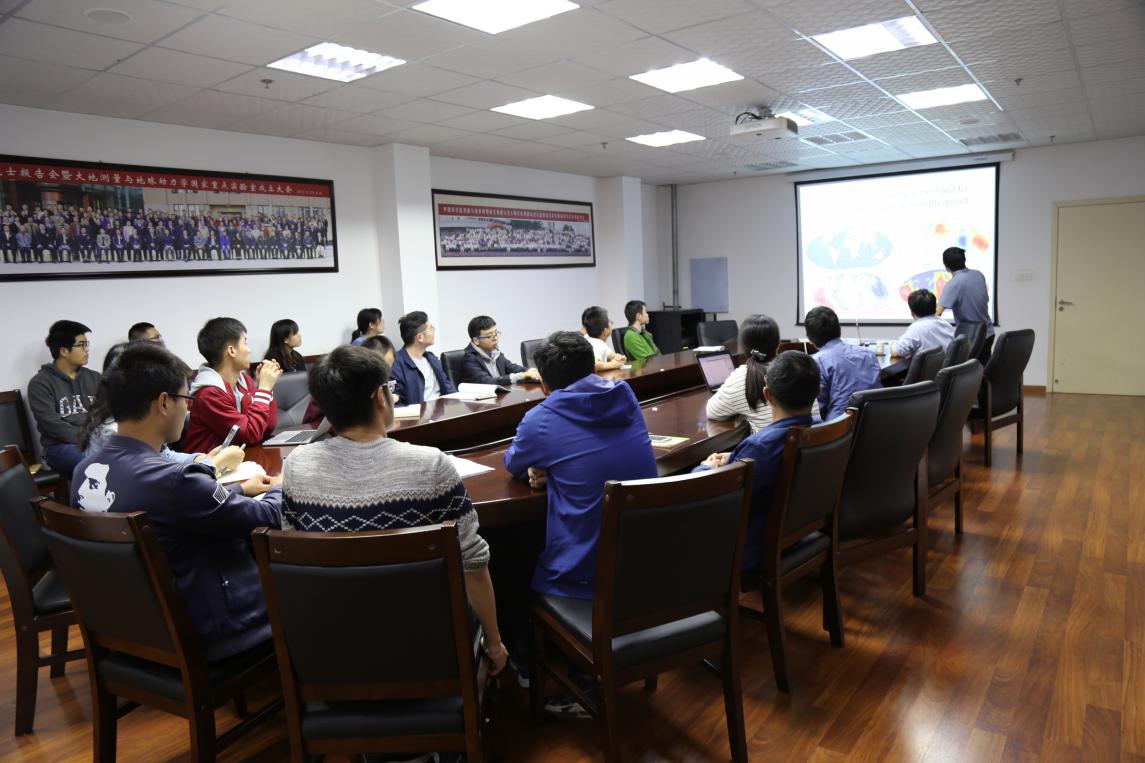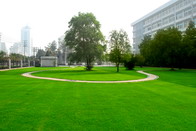Invited by State Key Laboratory of Geodesy and Earth’s Dynamics (SKLGED), Dr. Yang Ting from The University of Melbourne visited Institute of Geodesy and Geophysics(IGG) and gave two academics report in title “High-accuracy dynamic terrain observations and mantle convection model predictions are consistent” and “Cenozoic Northeast Asian Tectonic Evolution and Rapidly Aging Pacific Plate” on Mar 29.
The first report introduced the relationship between dynamic topography and observed residual terrain and calculated mantle convection models. He showed in detail how to recover long-wave dynamic topography in ocean observation data, and proposed that both model predictions and ocean observations give long-wave dynamic topography with a magnitude of about 1 km, positive values in the South Pacific and southern Africa, and negative values above the subduction plate. The report mentioned the importance of proper damping factors in the spherical harmonic deployment. The second report mainly introduced the role of trench retreat in the tectonic evolution of the Northeast Asian Cenozoic, and expounded the relationship between Japan's post-arc sea expansion, trench retreat, the formation of the Baikal rift, and the subduction of the Pacific plate. The simulation results and seismology have a good consistency in observations. In the discussion session, the participants conducted deeply discussions on the lithosphere density and viscosity structure and the shape of the subducted slabs, and achieved good exchange results.
Dr. Yang received his Ph.D. from the University of Science and Technology of China in 2013. He was a postdoctoral fellow at the Seismological Laboratory of the California Institute of Technology from 2013 to 2016. He is currently a post-doctoral researcher at the College of Earth Sciences, University of Melbourne. He is mainly engaged in dynamic terrain, subduction zones, lithosphere structural deformation and other geodynamic studies.

Dr. Yang was giving his report.

